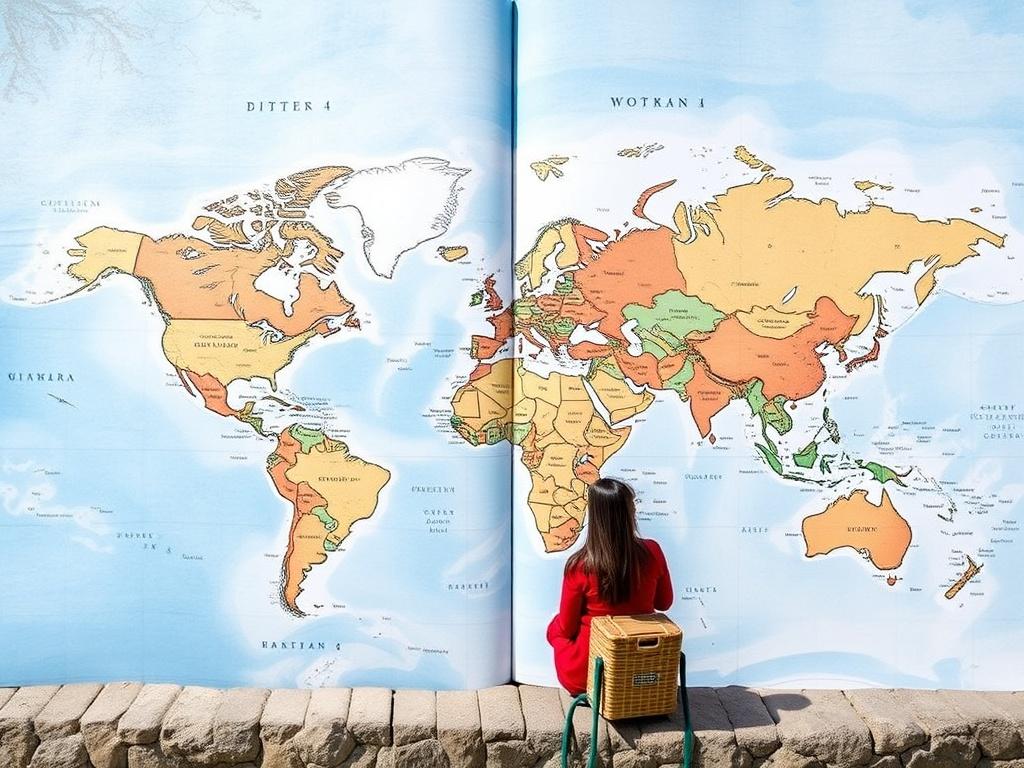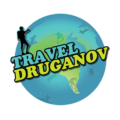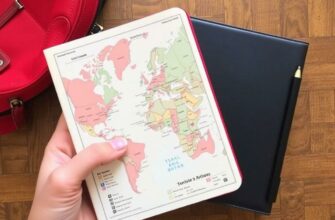Embarking on a solo world travel adventure is a thrilling and transformative experience. The freedom of exploring new cultures, the excitement of meeting strangers who become lifelong friends, and the challenges that force you to grow all combine into a story worth telling. If you’ve recently returned from such a journey, or you’re currently traversing the globe solo, the next logical step might be to write a book about your solo world travel. This article will take you through everything you need to know about crafting a compelling travel memoir that captures the essence of your experiences and connects deeply with your readers.
Writing a book about your solo world travel is not just about recounting destinations or listing tourist attractions. It’s about sharing your personal growth, the hardships you faced, moments of awe, and the life lessons learned along the way. But getting started can feel overwhelming. Where do you begin? How do you organize your thoughts? What insight do readers really crave? Let’s break it down step by step to help you transform your incredible journey into a captivating narrative.
Why Write a Book About Your Solo World Travel?
The decision to write a book about your solo world travel can stem from many motivations. Some people want to preserve their memories, create a legacy, or inspire others to embark on their own adventures. Others seek a creative outlet or a way to process their experiences in a meaningful manner. Whatever your reasons, writing such a book serves multiple purposes: it can be therapeutic, educational, and even a launching pad for other opportunities like speaking engagements or freelance travel writing.
Travel books are incredibly popular because they offer readers a window into a different life, culture, or way of thinking. Solo travel books, in particular, have a special appeal because they often explore themes of independence, vulnerability, and self-discovery—topics that resonate with a wide audience. When you write a book about your solo world travel, you’re not just telling a story; you’re inviting others to walk with you on a journey that challenges and inspires.
Planning Your Book: Laying the Foundation
Before you jump straight into writing, it’s important to plan your book carefully. Think of this stage as laying down a solid foundation that will support your narrative and keep you focused as you write.
Define Your Book’s Purpose and Audience
Ask yourself: What am I aiming to achieve with this book? Who do I want to reach? Are you writing for fellow travelers, people contemplating solo trips, or a broader audience interested in human stories? Clarifying these questions early on will help you shape your tone, content, and structure.
Choose Your Book’s Angle or Theme
Solo world travel can mean different things to different people. Maybe your book is a story of overcoming fears. Maybe it’s an exploration of cultural immersion or the challenges of solo backpacking on a tight budget. Choosing a unifying theme will add coherence. Here are some popular themes for travel books:
- Self-discovery and transformation through travel
- Cultural encounters and lessons
- Adventures of survival and problem-solving abroad
- Travel hacking and budget tips on the road
- Humorous travel mishaps and lessons learned
Outline the Structure
Once you define your purpose and theme, create a rough outline. A basic structure could follow your chronological journey from start to finish, or you might opt for thematic chapters that focus on specific aspects of your travels.
Capturing Your Solo Travel Experiences: Tips for Engaging Storytelling

The heart of your book lies in the stories. Readers want to feel like they’re right there with you, experiencing the hurdles and breathtaking moments firsthand.
Use Vivid Descriptions
Transport your readers by painting vivid pictures of the places you visited. Describe sights, sounds, smells, tastes, and tactile feelings. Instead of saying “I went to a market,” try: “The market buzzed with colors—vibrant spices piled high in woven baskets, the sharp scent of fresh mangoes mingling with earthy herbs, and the hum of haggling voices weaving a tapestry of life.”
Be Honest and Reflective
Writing about solo world travel often involves vulnerability. Don’t shy away from sharing your fears, loneliness, or mistakes. Reflect on how these moments changed you. Authenticity draws readers and builds trust.
Include Dialogue
Adding snippets of conversations with locals or fellow travelers can add life to your narrative and showcase different perspectives.
Balance Action with Reflection
While exciting adventures are important, take breaks to pause and reflect on their meaning. Share what you learned or how a moment affected your outlook.
Organizing Your Content Effectively

Managing a wealth of travel memories can be daunting. Here are some popular organizational methods to consider:
| Method | Description | Pros | Cons |
|---|---|---|---|
| Chronological | Follow your journey in the order it happened, from departure to return. | Easy for readers to follow; natural narrative flow. | Can be repetitive or lack thematic depth. |
| Thematic | Organize chapters around themes like personal growth, cultural experiences, challenges. | Allows deeper exploration; more flexible. | May require careful transitions to avoid confusion. |
| Geographical | Divide the book based on regions or countries visited. | Great for readers who want location-specific insights. | Can feel fragmented if not tied together well. |
Choosing the right structure depends on your story and what best highlights your solo travel experience.
Writing Techniques to Keep Your Readers Hooked
Keeping a reader engaged over several thousand words requires certain writing techniques.
Start with a Hook
Begin your book or each chapter with a compelling anecdote or question that grabs attention. For example, describe the moment you realized solo world travel would change your life forever.
Show, Don’t Tell
Instead of telling your readers you felt scared, show it through actions and sensory details: “My hands trembled as I clutched my passport at the crowded train station, unsure if I was heading in the right direction.”
Vary Your Sentence Length and Style
Mix short, punchy sentences with longer descriptive passages to maintain rhythm and interest.
Use Humor and Personality
Sharing funny mishaps or your travel quirks makes your writing relatable and entertaining.
Practical Tips on Writing a Book About Your Solo World Travel
Writing about travel requires a blend of creativity and discipline. Here are some tips to keep your project moving forward.
Write Regularly
Try to set a daily or weekly word count goal. Consistency is key.
Keep a Travel Journal
If you’re still traveling solo, use a journal or voice recorder to capture fresh memories and feelings.
Include Practical Information Sparingly
While readers appreciate tips like best hostels or transport hacks, focus primarily on storytelling. Sprinkle practical advice throughout but avoid turning your memoir into a guidebook.
Use Photos and Maps
Consider including personal photos, maps, or sketches to add visual interest. Make sure to get permissions if you use images of other people.
Seek Feedback
Show your manuscript to trusted friends, preferably those who appreciate travel writing. Getting constructive criticism early can improve your work immensely.
Publishing Your Solo Travel Book
Once your manuscript is polished, it’s time to think about publication.
Traditional Publishing vs. Self-Publishing
| Publishing Route | Pros | Cons |
|---|---|---|
| Traditional Publishing | Professional editing and design; larger distribution; prestige. | Highly competitive; longer timelines; less control over content. |
| Self-Publishing | Complete creative control; faster to market; higher royalty rates. | Marketing and distribution are your responsibility; costs upfront. |
Marketing Your Book
Use social media to connect with fellow travelers and book lovers. Consider writing guest blog posts or participating in travel forums. Book events, podcasts, and local libraries are great platforms for spreading the word.
Building an Author Platform
Start a blog or YouTube channel to share your ongoing solo world travel experiences. This builds your credibility and grows potential readers even before your book hits shelves.
Maintaining Authenticity and Integrity in Your Story
One of the most important aspects of writing a book about your solo world travel is honesty. Readers can tell when a story feels exaggerated or manufactured. Keep your narrative true to your experiences, including both highs and lows. Adventure does not have to be glamorous all the time—sharing moments of vulnerability makes your travel story resonate more deeply.
Respecting Privacy
If your story involves other people you met during your travels, be mindful of their privacy. Alter names or identifying details as needed, or ask permission if you plan to share their stories.
Highlight Cultural Sensitivity
Solo world travel means crossing cultural boundaries. Your book is an opportunity to promote understanding rather than stereotypes. Share your learning experiences about different cultures with openness and respect.
Common Challenges When Writing About Solo World Travel and How to Overcome Them
Even the most seasoned travelers and writers face hurdles during this process.
- Writer’s Block: Try freewriting exercises or changing your environment to spark creativity.
- Memory Gaps: Use diaries, photos, or social media posts from your travels to jog your memory.
- Overwhelm with Content: Stick to your outline and don’t try to include every single detail.
- Lack of Time: Break writing into manageable chunks; prioritize writing sessions.
Enhancing Your Travel Book with Supplementary Content
To make your book stand out, consider adding elements beyond text:
- Maps and Itineraries: Help readers visualize your route and plan their own journeys.
- Bucket Lists: Include lists of must-see sights or experiences from your travels.
- Resource Lists: Recommended books, films, or websites related to the places you visited.
- FAQ or Tips Section: Answer common questions about solo world travel to provide value.
Inspirational Examples of Solo Travel Books
If you want some inspiration, here’s a brief look at a few well-known or beloved books about solo world travel to guide your style and approach:
| Title | Author | Key Theme | Writing Style |
|---|---|---|---|
| Eat, Pray, Love | Elizabeth Gilbert | Self-discovery and healing | Reflective, poetic, personal |
| Wild | Cheryl Strayed | Overcoming adversity through solo travel | Raw, emotional, narrative-driven |
| Vagabonding | Rolf Potts | The philosophy and practicalities of long-term travel | Informative, conversational, motivational |
These examples show the variety of ways to approach writing a book about solo world travel—from deep personal transformation to practical guidance infused with personal anecdotes.
Balancing Travel Writing with Privacy and Emotional Well-being

Writing about deeply personal solo travel experiences can sometimes dredge up old emotions. Be gentle with yourself and set boundaries for what you feel comfortable sharing. Remember, you have control over how much of your inner life you reveal. It’s okay to protect your privacy while still crafting a compelling narrative.
Sometimes, professional editing or even counseling support can help you process emotions tied to your travel memories, especially if they involve trauma or significant loss.
Final Tips to Keep Your Solo Travel Book Fresh and Impactful
- Read Other Travel Books: See what resonates with you and note what you would do differently.
- Write in Your Own Voice: Don’t try to imitate others. Authenticity is your strength.
- Edit Ruthlessly: Cut out filler and focus on what moves the story forward.
- Keep Your Reader in Mind: Ask yourself if your writing entertains, informs, or inspires.
- Celebrate Your Progress: Writing a book is a big accomplishment. Reward yourself along the way.
Conclusion
Writing a book about your solo world travel is a deeply rewarding endeavor that allows you to immortalize your journey, inspire others, and reflect on your transformative experiences. By thoughtfully planning your book’s purpose, embracing honest storytelling, and using engaging writing techniques, you can craft a compelling narrative that resonates with readers seeking adventure, self-discovery, and new perspectives. Remember to maintain authenticity, organize your content effectively, and balance narrative with practical insights. While challenges like writer’s block or emotional vulnerability may arise, persistence and passion for your story will carry you through. Whether you choose traditional publishing or self-publishing, sharing your solo travel adventures can open new doors and deepen your connection to the vast world you’ve explored. So, tap into your experiences, ignite your creativity, and start writing the book that only you can tell. Your solo world travel story deserves to be heard.









